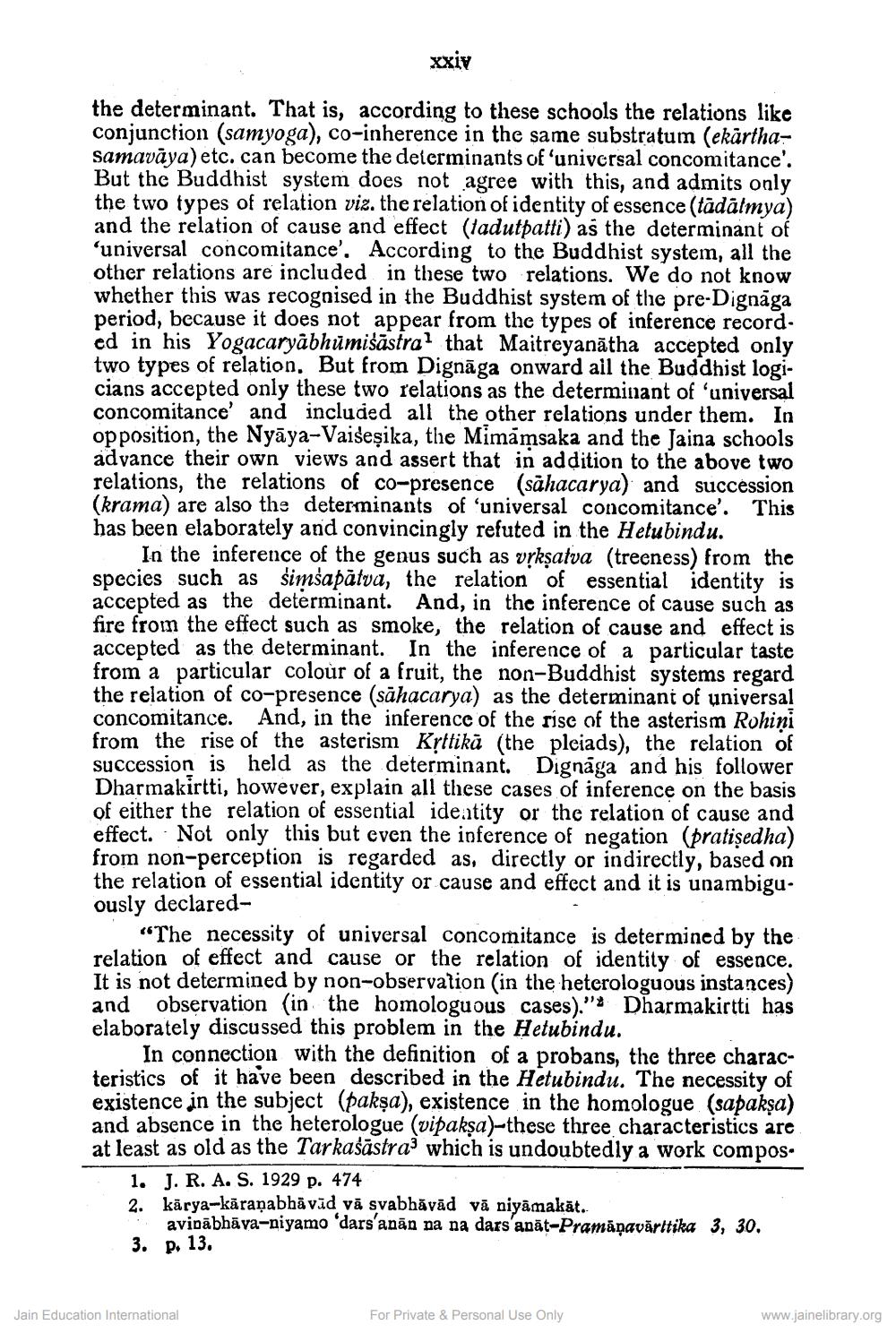________________
xxiv
the determinant. That is, according to these schools the relations like conjunction (samyoga), co-inherence in the same substratum (ekārthasamavāya) etc. can become the determinants of universal concomitance'. But the Buddhist system does not agree with this, and admits only the two types of relation viz. the relation of identity of essence (tadalmya) and the relation of cause and effect (tadutpatti) as the determinant of 'universal concomitance'. According to the Buddhist system, all the other relations are included in these two relations. We do not know whether this was recognised in the Buddhist system of the pre-Dignāga period, because it does not appear from the types of inference record. ed in his Yogacaryabhumiśāstral that Maitreyanātha accepted only two types of relation. But from Dignāga onward all the Buddhist logicians accepted only these two relations as the determinant of 'universal concomitance and included all the other relations under them. In opposition, the Nyāya-Vaiseşika, the Mimāmsaka and the Jaina schools advance their own views and assert that in addition to the above two relations, the relations of co-presence (sähacarya) and succession (krama) are also the determinants of 'universal concomitance'. This has been elaborately and convincingly refuted in the Hetubindu.
In the inference of the genus such as vrksatva (treeness) from the species such as simšapātva, the relation of essential identity is accepted as the determinant. And, in the inference of cause such as fire from the effect such as smoke, the relation of cause and effect is accepted as the determinant. In the inference of a particular taste from a particular colour of a fruit, the non-Buddhist systems regard the relation of co-presence (sähacarya) as the determinant of universal concomitance. And, in the inference of the rise of the asterism Rohini from the rise of the asterism Krttikā (the pleiads), the relation of succession is held as the determinant. Dignaga and his follower Dharmakirtti, however, explain all these cases of inference on the basis of either the relation of essential ideatity or the relation of cause and effect. Not only this but even the inference of negation (pratişedha) from non-perception is regarded as, directly or indirectly, based on the relation of essential identity or cause and effect and it is unambiguously declared
"The necessity of universal concomitance is determined by the relation of effect and cause or the relation of identity of essence. It is not determined by non-observation (in the heterologuous instances) and observation in the homologuous cases)." Dharmakirtti has elaborately discussed this problem in the Hetubindu.
In connection with the definition of a probans, the three characteristics of it have been described in the Hetubindu. The necessity of existence in the subject (pakşa), existence in the homologue (sapakşa) and absence in the heterologue (vipaksa)-these three characteristics are at least as old as the Tarkaśāstra which is undoubtedly a work compos.
1. J. R. A. S. 1929 p. 474 2. kārya-kāraṇabhāvā vā svabhāvād vă niyāmakāt.
avidābhāva-niyamo 'dars'anān na na dars anät-Pramănavāritika 3, 30. 3. p. 13.
Jain Education International
For Private & Personal Use Only
www.jainelibrary.org




